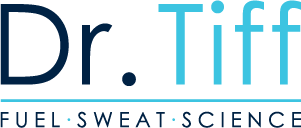Protein: What, Why, How Much
Do you think a peanut butter toast in the morning is enough to get you through the day?
The truth is, the peanut butter itself is not a complete protein. And it also just doesn’t have a lot of protein. When you compare that to your daily protein requirement, you might only get six or eight grams in there.
So what are the best protein sources out there?
And how much protein do you actually need to begin with?
There is a LOT of misinformation about protein that’s circulating in the fitness and nutrition space today.
Protein as Fuel? – Not Likely!
The food and supplement industry is grabbing hold of the benefits of protein, and then they’re just blowing them way out of proportion. Even manufacturers of nuts, cereals, and bread are all claiming to be high in protein that can fuel your body.
First off, protein is not a fuel source, well at least, not a primary fuel source. For most average, everyday folks, protein is not going to be a primary fuel source for daily activity, but carbs and fat.
And so, when these commercials and ads and packaging tout protein as fuel, just be aware and make sure to do your research. Read food labels, assess the quality and the quantity of the protein, and make sure you’re getting the right information and getting the right amounts for your goals.
What is Complete Protein?
A complete protein contains all of the essential amino acids. By “essential” it means those amino acids that cannot be made by the body so they have to come from food and other sources.
Examples of complete protein food sources include:
- Fish
- Chicken
- Beef
- Soy
- Eggs
- Whey
- Dairy products
- Dairy milk or soy milk
- Spirulina powder
Plant-based sources
- Quinoa
- Hemp
- Chia seeds
- Pistachios
How Much Protein Do You Need?
Protein is super satiating and is anabolic. But are you getting too much of it? You probably see people saying one gram per pound of body weight, yet most people don’t need that much protein in a day.
On the flip side, we need a lot more than the RDA recommendation, which is really low in my book. And so we have to find that middle ground, which is about 0.75 grams per pound.
At the end of the day, you need to understand the role of protein in rebuilding muscles and how protein synthesis works to help you recover, and understand which sources are most absorptive and most bioavailable so you can get the most of what you’re eating during the day.
If you want to learn more about protein, check out https://workwithdrtiff.com/episode-012.
